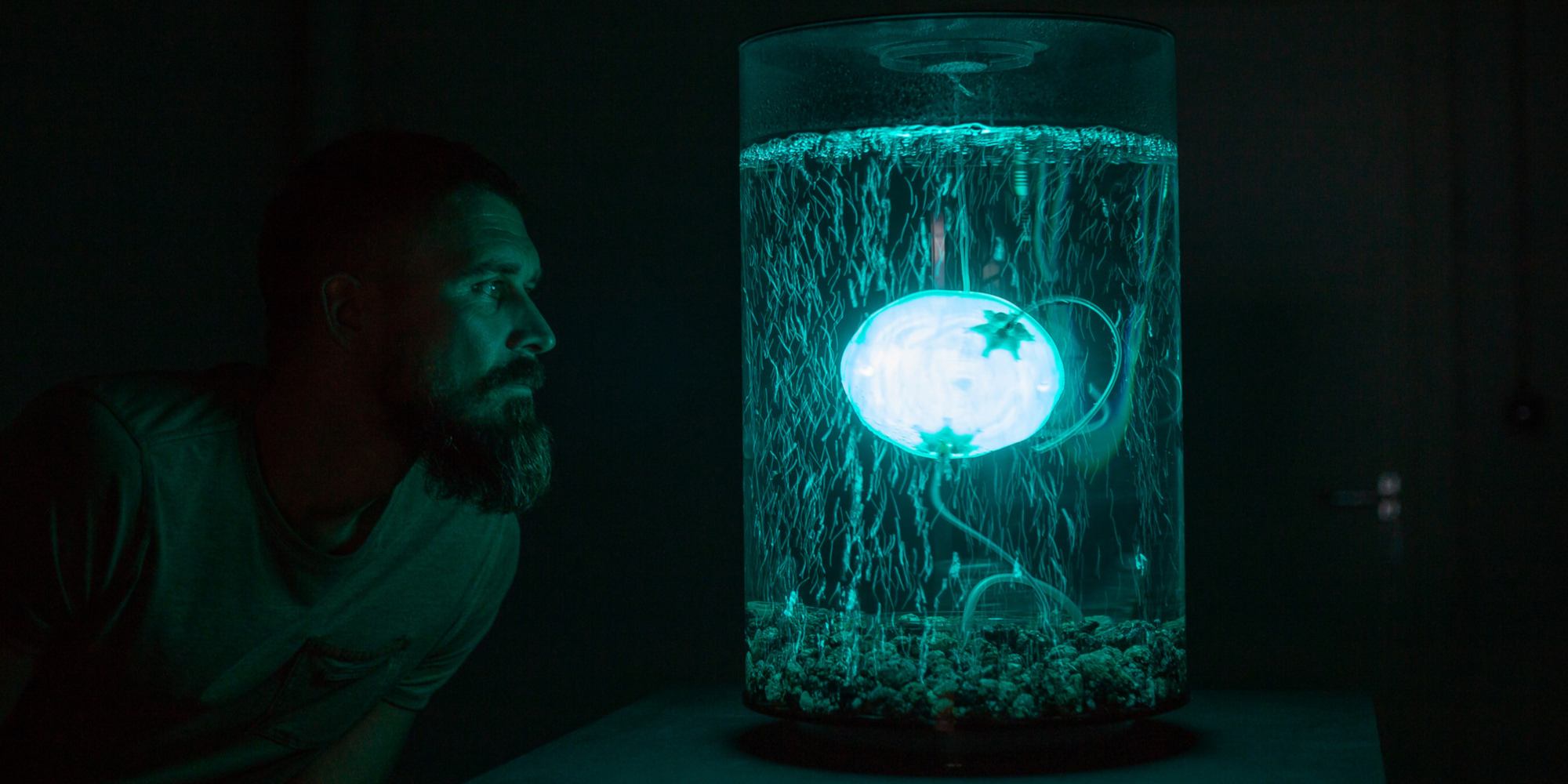This underwater robotic installation explores what ”life” might mean in a post singularity, post climate change future. The project is based on new research about archaea (the oldest life-forms on Earth) combined with the latest innovations in machine learning and artificial intelligence creating the ”ultimate” species for the end of the world as we know it. New research is revealing the mechanisms by which ancient archaea called Sulfolobus acidocaldarius can move around to seek ”food” using tails known as archaella. The archaella use cogwheel-like ”motors” to swim about. Our collaborator cryo-microscopist Amanda Wilson is studying the structure of these archaella to make tiny drills made of DNA which might be used to drill into cells to cure diseases, but the robotic archaella are made through 3-D printing.


Credits:
Made in collaboration with Amanda Wilson as part of the EU FET Open H2020 funded MARA project based in the Beeby Lab at Imperial College London, and with Professor Daniel Polani from the School of Computer Science at the University of Hertfordshire.
Supported by Arts Council England and through an EMAP/EMARE artists residency at LABoral Centro de Arte y Creación Industrial in Spain via funding from Creative Europe.




